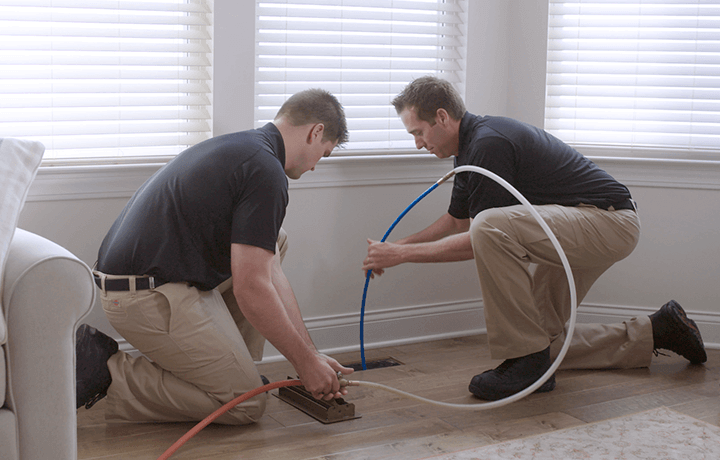In today’s modern world, the need for a comfortable indoor environment is more crucial than ever. Whether it’s scorching summer heat or chilly winter nights, an efficient HVAC system ensures that homes and businesses remain cozy. But what exactly are the components of an HVAC system? Lets take a deeper dive into the fascinating and tremendous technology behind it.

Introduction to HVAC Systems
HVAC stands for Heating, Ventilation, and Air Conditioning. These systems are designed to provide thermal comfort and maintain indoor air quality. HVAC systems are integral to residential buildings, commercial spaces, and industrial facilities, making them indispensable in our daily lives.

The Core Components of an HVAC System
To understand how an HVAC system works, its important to know its core components. These are:
1. Thermostat
The thermostat is the brain of the HVAC system. It regulates the temperature by turning the heating or cooling devices on and off.
2. Furnace
The furnace is the central component for heating in an HVAC system. It generates heat and distributes it throughout the building.
3. Heat Exchanger
Located inside the furnace, the heat exchanger warms the air before it’s circulated through the building.
4. Evaporator Coil
Placed inside or near the air handler or blower, the evaporator coil cools the air when the air conditioning mode is on.
5. Condensing Unit
The condensing unit is located outside and contains the condenser coil, which releases the heat absorbed from indoors to the outdoors.
6. Refrigerant Lines
Refrigerant lines connect the evaporator coil and the condensing unit. They carry the refrigerant, which helps in heat exchange and cooling.
7. Ductwork
Ductwork is the network of ducts that distribute conditioned air throughout the building. Proper ductwork is crucial for maintaining consistent and efficient airflow.
8. Vents
Vents are the outlets in each room where air is delivered or returned to the HVAC system.

How These Components Work Together
The components of an HVAC system work in harmony to ensure a comfortable indoor climate. Here’s how:
- Heating Mode: The thermostat detects a drop in temperature and signals the furnace. The furnace generates heat, which is then transferred to the heat exchanger. The blower moves this warm air through the ductwork to the vents in various rooms.
- Cooling Mode: The thermostat detects a rise in temperature and signals the condensing unit and the evaporator coil. The evaporator coil absorbs heat from the indoor air using the refrigerant. This heat is then transferred to the condenser coil outside, where it is released. Cool air is circulated back into the room via the ductwork and vents.

Types of HVAC Systems
There are different types of HVAC systems to suit various needs. These include:
1. Split Systems
Split systems have both an indoor and an outdoor unit. They are commonly used in residential homes and small commercial buildings. The indoor unit contains the evaporator coil, and the outdoor unit houses the condensing coil.
2. Hybrid Systems
Hybrid systems use both a furnace and a heat pump, offering flexibility in energy use. They can switch between electricity and gas, optimizing energy efficiency.
3. Duct-Free Systems
Duct-free systems include an outdoor unit connected to indoor units without the need for ducts. Each room can have its own individual control, making these systems highly efficient for specific areas.
4. Packaged Systems
Packaged systems contain all the components in one single unit, usually placed on the roof or a concrete slab beside the building. They are often used in commercial buildings.

Advantages of a Well-Functioning HVAC System
A well-functioning HVAC system offers numerous benefits, including:
- Comfort: Keeps the indoor environment at a comfortable temperature regardless of the weather outside.
- Energy Efficiency: Modern HVAC systems are designed to be energy-efficient, reducing utility bills and environmental impact.
- Air Quality: Proper ventilation and filtration improve indoor air quality, reducing allergens and pollutants.
- Lifespan: Regular maintenance extends the lifespan of the HVAC system, ensuring long-term performance.
Maintenance Tips for Your HVAC System
Keeping your HVAC system in top shape requires regular maintenance. Here are some tips:
1. Regular Inspections
Schedule annual inspections with a professional technician to check for any issues and ensure the system’s efficiency.
2. Replace Filters
Change the air filters every 1-3 months to maintain clean airflow and reduce strain on the system.
3. Clean Ductwork
Ensure the ductwork is clean and free from debris. For information on duct cleaning services, you can read more here.
4. Seal Leaks
Check and seal any leaks in the ductwork to prevent air loss and improve system efficiency. Learn effective strategies here.
Conclusion
Understanding the components of an HVAC system and how they work together can help you make informed decisions about installation, maintenance, and repairs. A well-maintained HVAC system ensures comfort, energy efficiency, and improved air quality. For a deeper dive into the benefits of air duct cleaning, explore more here.
FAQs
Q1: How often should I service my HVAC system?
A: It is recommended to have your HVAC system serviced at least once a year, preferably before the heating and cooling seasons begin.
Q2: What are the signs that my HVAC system needs repair?
A: Common signs include strange noises, unusual odors, reduced airflow, and inconsistent temperatures throughout the building.
Q3: Can I perform HVAC maintenance myself?
A: While some basic maintenance tasks like changing filters can be done by homeowners, it is always best to have a professional technician handle more complex inspections and repairs.